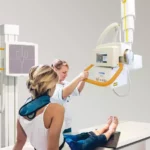Tracheal Stent
Stents for the larynx and tracheal are solid or hollow tubes that are absorbable or non absorbable and come in a various range of forms, sizes, and materials. Stents are used as a first-line treatment for lumen collapse or to stabilize a laryngeal or tracheal reconstruction effort to avoid collapse.
The Tracheal Stent market research report offers a detailed analysis of this industry and estimates that it will produce substantial income by the end of the forecast period. The report provides essential information about market dynamics, such as the driving factors that affect the commercialization scope of this industry and the various risks that exist in this industry. A description of the market’s current growth opportunities is also included in this article.
Indications for need of Tracheal stents:-
The following are some of the most common reasons for Tracheal stenting:
- In malignant Tracheal cancer, palliation of extrinsic compression and endo luminal intrinsic lesions;
- Tracheal stenosis is a benign condition that can be treated.
- Fistulas and dehiscence of the Tracheal are treated.
- Anastomotic complications following lung transplantation (LT);
- Tracheal stenosis in children is also treated.
KEY OPPORTUNITIES
Tracheal stents are currently available, work on drug-eluted stents is in the works, and three-dimensional printing of a personalized Tracheal stent may be in the works in the future. The collection and outcomes of the most widely used Tracheal stents are discussed in this study.
Based on the recent study, there is a driving force is the increasing prevalence of cancer and respiratory disorders. The demand is rising due to a variety of chronic respiratory illnesses, lung cancer, and pre-existing conditions such as infections, tuberculosis, lymphoma, and metastatic cancers. COPD is another form of chronic condition that restricts airflow and causes breathing problems including emphysema and chronic bronchitis, adding to the rising demand for airway stents.
Many that have declined to respond to aggressive traditional medical treatment are option for patients or interventional therapy. Various surgical procedures have been described; however, extra luminal polypropylene prosthesis is the usually prescribed surgical therapy. Extra luminal support rings are placed around the Tracheal during an open cervical approach, and it has a confirmed 75 percent to 85 percent overall success rate for reducing clinical signs in some patients.
In patients with central Tracheal obstruction, Tracheal stents may provide efficient and timely relief. Silicone-based stents are the most widely used Tracheal stents in the world, and they have a long history of protection. Metallic stents have progressed from their earliest exposed versions to a wide range of new covered stents. Despite the availability of a variety of stent materials and designs, little progress has been made in stent technology advancement, and an ideal stent has yet to be produced. Nonetheless, the first generation of biodegradable Tracheal stents is available, work on drug-eluted stents is underway, and three-dimensional printing of a custody device is in the works.
STENTS ARE AVAILABLE IN THE FOLLOWING FORMS:-
SELF-EXPANDING METALLIC STENTS (SEMS)
Stainless Steel (Elgiloy).
In the year 2000, the first abstract of clinical use of self-expanding metallic stents (SEMS) in patients was published. 2 The Wallstent by Boston Scientific research is a stainless steel or more accurately, Elgiloy SEMS that has many advantages over balloon-expanded metallic stents (BEMS) in the Tracheal. These stents are very flexible with enough recoil, they can be reconstraint and repositioned if they haven’t completely deployed, and they come in suitable lengths to treat Tracheal failure. These stents are on relatively narrow delivery devices, allowing them to be placed into an endo Tracheal tube. Wallstents were used in some patients.
Nitinol – Wire-wound (mesh)
Following the high fracture rate of the laser-cut nitinol stents, we chose to go back to the wire mesh style, which had a lower fracture rate, but used stainless steel instead of the more fatigue-resistant nitinol. In addition, to minimize the risk of granuloma/inflammation at the stent ends, a pattern was chosen in which the stent was constructed from a single wire wound upon itself, resulting in rounded rather than sharp edges.
STENT FRACTURE
In some patients with end-stage Tracheal failure, stent fracture is also a severe side effect of Tracheal stent placement. While the causes and risk factors for Tracheal stent fracture remain unknown, the author believes that stent fractures are more common in patients who have continued severe coughing; therefore, one may expect a higher rate of stent fracture in those patients who have concurrent bronchial collapse, other lower Tracheal disease, concurrent heart disease, or those who have no heart disease (antitussives and anti-inflammatories).
- In a recent retrospective study the data that has revealed us, approximately around 20% of lungs patients.
CHALLENGES
The Tracheal Stent market report discusses not only the industry’s geographic reach, but also other deliverable such as sales volume, market concentration rate, market share, market competition patterns, and revenue forecasts. The research also involves the distribution networks used by vendors to sell their goods in the most profitable way possible.
Tracheal chondromalacia, also known as Tracheal collapse, is a degenerative disease affecting the hyaline cartilage rings that protect the Tracheal lumen. During various phases of respiration, the Tracheal is muscle weakens, resulting in Tracheal lumen loss. The resulting clinical condition is most often seen in toy breed dogs and presents as a wild cough with varying degrees of dyspnea. Conservative management strategies and medical management will help to alleviate clinical signs for years; however, for animals who fail to respond to these more traditional therapies, more aggressive care is often needed.















